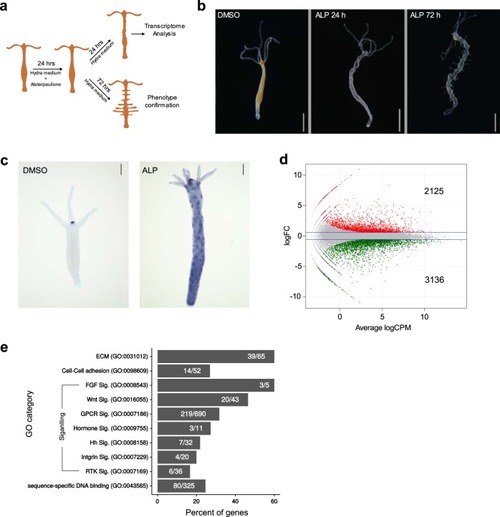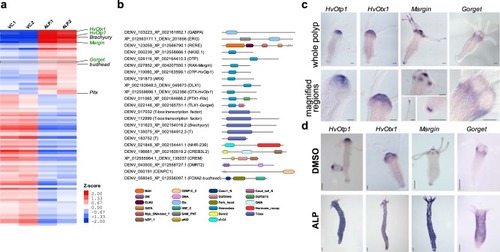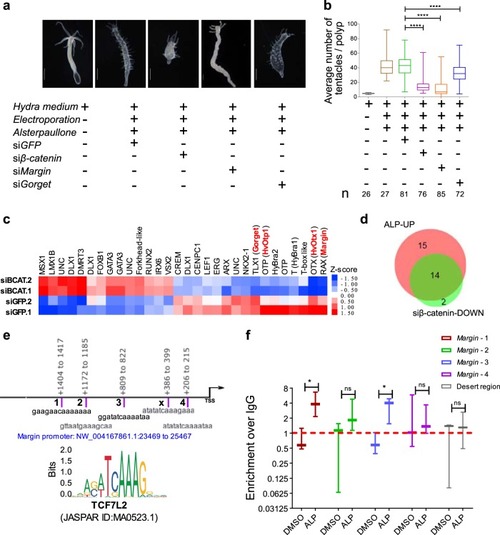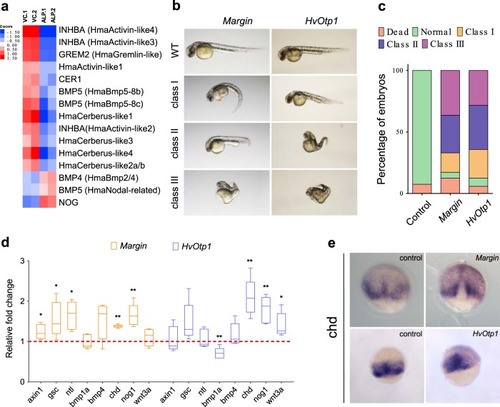- Title
-
Molecular signature of an ancient organizer regulated by Wnt/β-catenin signalling during primary body axis patterning in Hydra
- Authors
- Reddy, P.C., Gungi, A., Ubhe, S., Pradhan, S.J., Kolte, A., Galande, S.
- Source
- Full text @ Commun Biol
|
Global molecular changes that result in a drastic phenotypic alteration with expanded hypostome-like features upon systemic activation of Wnt signalling. Wnt-regulated genes were identified by differential gene expression (DE) profiling after inhibiting GSK-3β with Alsterpaullone (5 μM). |
|
Homeobox family transcription factors (TFs) upregulated upon activation of Wnt signalling are expressed in head (oral side) of the polyp. Hierarchical clustering of differentially expressed TFs was carried out and domain organization of the upregulated TFs was studied. Expression analysis of selected TFs was carried out by in situ hybridization. |
|
Inhibition of ectopic tentacle phenotype by knockdown of |
|
|
|
Conserved and novel homologues of bilaterian genes involved in axis patterning and regulated by the Wnt/β-catenin signalling pathway in |





